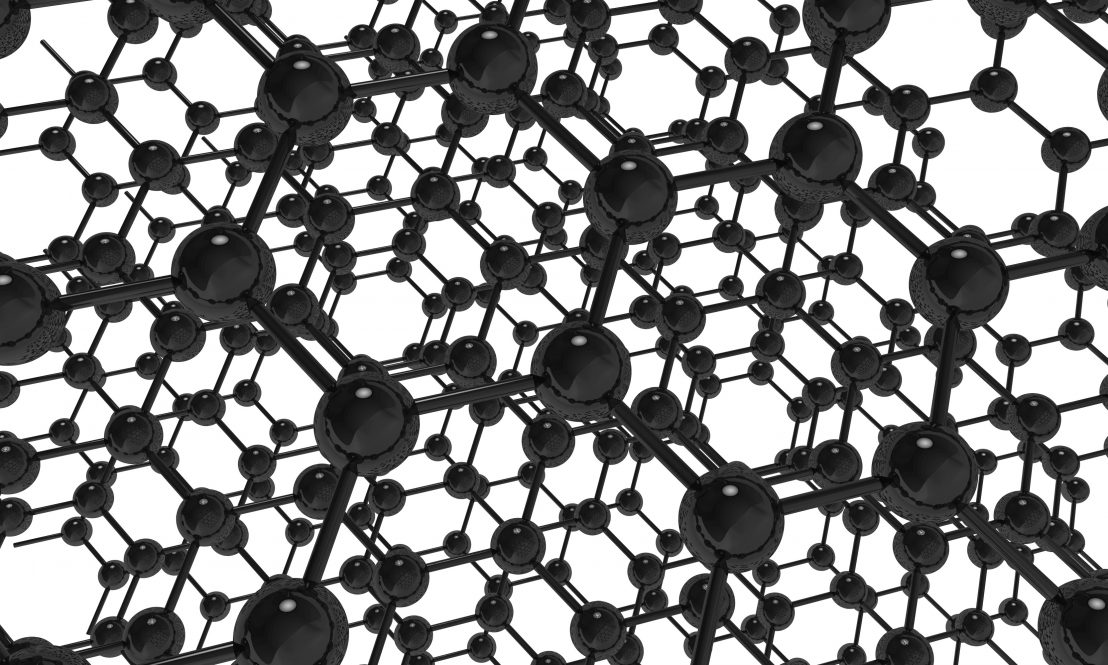You may recognize graphite as the “lead” in a pencil, but besides helping you take notes or fill in countless bubbles on exam answer sheets, it is helping scientists grapple with the secrets of superconductivity.
Superconductivity happens when an electric current is transmitted through wires without the loss of any energy in the form of heat or resistance. Superconducting materials have the potential to revolutionize many aspects of our daily lives, from improving the electrical grid to making more powerful computers. However, superconductivity generally requires very low temperatures, so low they may become impractical, and the exact mechanisms of superconductivity are not well understood for many superconducting materials.
In their recent Nature publication, a collaboration of researchers, including UConn Department of Physics Professor Pavel Volkov, detail surprising findings about superconductivity in twisted trilayer graphene.
In 2018, attention focused on the rich physics of superconductivity in multilayer graphene, which is a single layer of carbon atoms forms graphite. As a single layer, graphene is not superconducting; however, this changes when two layers are stacked and slightly twisted to form twisted bilayer graphene (TBG). Stacking three layers to make twisted trilayer graphene (TTG) together makes the system more stable and robust and was the subject for much of this study.
The twist leads to unique and unconventional superconducting properties in the twisted trilayer graphene. Volkov says that at a so-called ‘magic’ twist angle, quantum interference effects lead to the motion of elections slowing down enormously as they move through the layers of graphene, allowing them to interact much more strongly with one another, which is likely the driving force of superconductivity.
“A number of observations on twisted trilayer graphene are quite similar to another system of immense interest where interactions are strong — the cuprate high transition temperature superconductors. We’re interested in it fundamentally because we don’t quite understand how this works,” Volkov says.
Indeed, the famous theory of Bardeen, Cooper and Schrieffer, published in 1957, is known to fit well many known superconductors, Volkov explains. Their theory attributes superconductivity to the electrons forming “Cooper pairs” due to interaction with lattice vibrations. However, it does not match the observations for cuprates and several other material classes, which has since earned the name of “unconventional” superconductors. Some of them, like cuprates, become superconducting at relatively high temperatures – which in this case is -200°F – while others, including TTG, superconduct only at extremely low temperatures below -450°F. Yet, the presence of strong interactions between the electrons unites these rather different materials.
Scientists hope that studying how superconductivity happens in TTG may help gain understanding the origin of unconventional superconductivity and in raising the extremely low temperatures required.
Getting a conclusive answer
Volkov says the graphene system is great for studying superconductivity because it is clean, and fairly easy to control.
“After adding the twist, suddenly it starts to show all the physics that we don’t understand,” he says. “The hope is that if we start with a system which is perhaps a little bit more in the theoretical control than the messy chemistry of the cuprates, maybe we can understand the general principles behind unconventional, non-BCS superconductors.”
Many previous studies in graphene, though they contribute important information, are limited in describing superconductivity, says Volkov, because those experiments focus on the properties of single electrons rather than electron pairs.
“What matters is that electrons form pairs, and somehow you want to probe the properties of those pairs to be able to study superconductivity. That is what this experiment achieves.”
Volkov offers an analogy: if an electric field is applied to a superconductor, it will result in an increase in the velocity and acceleration of the electron pairs and a current increasing in time. This phenomenon is known as inductance.
“At an engineering level, a superconductor is just an inductor, the problem is they are typically bad inductors. The better a superconductor is, the worse it is as an inductor.”
Volkov says that co-authors Abhishek Bannerjee, Zeyu Hao and Mary Kreidel from the groups of Philip Kim, from Harvard’s Department of Physics, and K.C. Fong from Raytheon BBN Technologies, developed electrical circuits that allow the researchers to perform experiments to study the inductance of the superconducting graphene. Then, they were able to directly measure the inertia and density of the Cooper pairs that lead to superconductivity.
Volkov says the question they wanted to answer concerns the structure of the electron pairs. When particles form a pair, their relative motion does not stop, but different kinds of motion can occur. While in the BCS theory relative motion of electrons in a pair is uniform, or isotropic, Volkov says there is evidence that the electrons in unconventional superconductors pair in a non-uniform, or anisotropic way.
“Up to this work, I don’t think we had a conclusive answer on whether that pairing is isotropic or anisotropic in twisted graphene,” he says. “It’s important because the conventional mechanisms of superconductivity, such as what is proposed in BCS theory, typically advocate for uniform isotropic pairing. This experiment demonstrates that pairing in TTG is strongly anisotropic, and it reinforces the connection between twisted tri-layer graphene and high transition temperature cuprates, which is remarkable. As scientists, we want to see things that are that are complex but universal, because there’s trivial complexity. Every sample is different. Here we find two very different materials, showing quite similar properties, including superconductivity. Given the excellent tunability of TTG, the hope is that maybe we can get our hands on the universal principles of unconventional superconductivity, which are still missing.”
‘Beautiful experiments’
Volkov says the discovery has been made by studying how temperature and current breaks the electron pairs apart. For strongly anisotropic pairs, there are always directions along which the pair is easy to break. Thus, even a tiny temperature change can lead to anisotropic pairs breaking apart. Volkov says they experimented with other parameters to disrupt the Cooper pairs, such as altering the current, and the results further confirm that the Cooper pairs in TTG are highly anisotropic.
To understand more about the underlying electronic state, Volkov developed a theoretical model for the behavior of the TTG inductance as a function of temperature and current, in collaboration with co-authors Patrick Ledwith and Ashvin Vishwanath from Harvard’s Department of Physics.
“By measuring the properties of superconducting pairs of electrons, we also get information on the underlying electronic structure and underlying properties of single electrons in that highly anisotropic state,” Volkov says. “That information is something we had to do theoretical modeling for, because it was not conforming to some simple expectations, where the more electrons you put in, the more superconducting pairs you get. That’s not how it works here. These beautiful experiments also gave us insights on the behavior of single electrons in TTG.”
The take-home message of the paper is the electrons in twisted multilayer graphene behave unlike those described by BCS theory; but remarkably, they share properties with high-temperature cuprates, which may have practical uses. As Volkov says, they need to go back to the drawing board to develop a new theory of the superconducting state that accounts for these extraordinary materials because they may pave the way for a new generation of superconductors for real-world applications.



